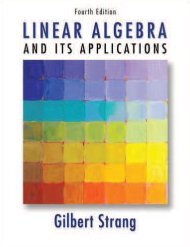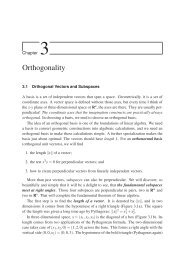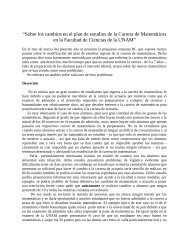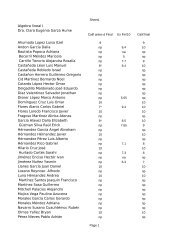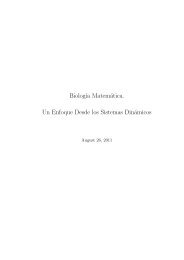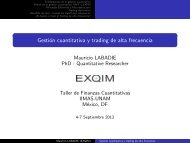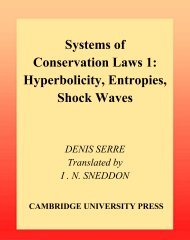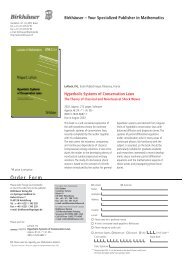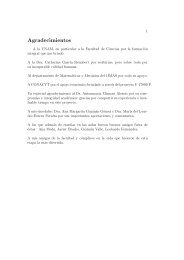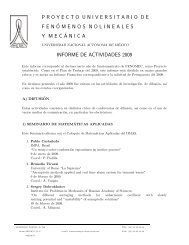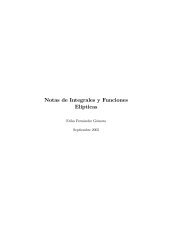An expansion method for non-linear Rayleigh waves - FENOMEC
An expansion method for non-linear Rayleigh waves - FENOMEC
An expansion method for non-linear Rayleigh waves - FENOMEC
You also want an ePaper? Increase the reach of your titles
YUMPU automatically turns print PDFs into web optimized ePapers that Google loves.
P. Panayotaros / Wave Motion 36 (2002) 1–21 15The numerical results that follow were obtained following the above procedure, and solving (6.14) using the NAGlibrary implementation of the hybrid Newton–Raphson <strong>method</strong> of [16]. The computed Fourier coefficients of thesurface displacement are normalized as in (6.15). By (6.10), to obtain numerical values <strong>for</strong> the surface displacement(e.g. ν = 0.28 <strong>for</strong> glass, ν = 0.28and λ 1 we need to specify the Poisson’s ratio ν =2 1 (λ/(λ+µ)), and we set ν = 4 1<strong>for</strong> iron, see [15], p. 129). The <strong>Rayleigh</strong> speed <strong>for</strong> ν =4 1 is approximately c2 0 = 0.845(µ/ρ).We found two types of sequences of numerical solutions. First, we see sequences where the computed surfacedisplacements v [0]1 (x 1, 0), v [0]2 (x 1, 0) approach definite <strong>non</strong>trivial shapes as we increase the number of modes. Thecorresponding sequences λ N i1also seem to approach a limit. The conjectured limits are candidates <strong>for</strong> solutions ofthe first solvability condition. The shapes of some of the surface displacements obtained numerically <strong>for</strong> the firstand second <strong>non</strong>-<strong>linear</strong>ities of (6.3), and <strong>for</strong> the the St. Venant-Kirchhoff material of (6.2) are shown in Figs. 1–3.Also, the values of λ 1 corresponding to the solutions of Figs. 1–3 are shown in Fig. 6(a)–(c). Evidently, there aresequences of surface displacements and λ 1 with possible <strong>non</strong>-trivial limits <strong>for</strong> all three <strong>non</strong>-<strong>linear</strong>ities considered.<strong>An</strong> interesting feature of the numerical solutions is the appearance of well-defined cusps in v [0]1 (x 1, 0) <strong>for</strong> all the<strong>non</strong>-<strong>linear</strong>ities considered. On the other hand, v [0]2 (x 1, 0) appears to be differentiable. The numerical solutions alsoFig. 3. (a) and (b) shows surface displacement and horizontal component v [0]1 (x 1, 0) of 300, 500 modes, respectively, St. Venant-Kirchhoffmaterial of (6.2); (c) and (d) shows surface displacement and vertical component v [0]1 (x 1, 0) of 300, 500 modes, respectively, St. Venant-Kirchoffmaterial of (6.2) (multiply by 1.47).



